Is Joe the New Jimmy?
Introduction
In October of last year, just weeks before the 2020 Presidential Election, I wrote an article for The Keynote entitled “Is Trump the New Carter?” With little certainty as to the outcome of such a highly-contentious, lengthy, and polarizing campaign season, it felt like a fair question to ask. To my credit, many of the piece’s predictions saw vindication at the ballot box. Trump alienated moderate segments of the Republican Party; his lackluster pandemic response diminished American morale and destabilized the country’s thriving economy, and a culture of executive chaos gave way to public apathy—to malaise if you will. With that, and just 232 Electoral College votes, Trump earned the title of “One-Termer,” much like the predecessor to whom I so gravely compared him: Good Ol’ Jimmy Carter.
Thirteen months ago, I claimed that, were candidate Biden to win, his success couldn’t solely be founded in contempt for the current President. Rather, he’d need to animate his own base—breathe life into the Democratic establishment with charisma, and lend a hand to progressives with twenty-first century policy that reflected the scope and scale of America’s ever-mutating, ever-multiplying challenges. For a while, during the “honeymoon” period of his early Presidency, it felt as though this dream was on a path to full realization.
Not only had he mounted the support needed to reach 1600 Pennsylvania Ave., Biden’s first hundred days in office felt like a herald of lasting success, of enduring liberal productivity, and renewed bipartisan cooperation. Perhaps he truly could deliver on the myriad lofty promises of election season: bring an end to a protracted pandemic, soothe our economic woes, untangle the perpetual gridlock that left our country’s public infrastructure in shambles. By mid-summer, he’d rallied enough support in Congress for the passage of a ~1.9 trillion dollar COVID-19 relief package, delivered on rapid, nationwide vaccine rollout, and reversed dozens of Trump-era regressive policies scorned by progressives and moderates alike.
Though, just as the fleeting freedom of “Post-Pandemic America” gave way to an autumn of relapse, obstacles began to pile in Biden’s path and obscure his administration’s vision for the future.
Afghanistan
It all began with Afghanistan. By the start of 2020, after nearly two decades of ceaseless warfare in the Middle East—billions of dollars and thousands of lives poured into equipping the US-backed Islamic Republic of Afghanistan to weather Taliban resistance—a rare point of bipartisan consensus had emerged: the government and military had done enough. Enough spending, enough training, enough time. The Trump administration, having struck a deal with Taliban leaders, pinned down a withdrawal date: all US troops out of the country by May 1, 2021.
Despite a turbulent exchange of executive power here at home, hopes for an eminent extraction remained center-stage. Biden continued gradual troop movements and similarly committed to a complete withdrawal of American forces, this time by September 11th—ending “the war on terror” exactly twenty years to-the-day.
By the close of summer, with US military presence in twilight, rumblings of Taliban aggression grew stronger. The Nimroz province fell first, one step along an emerging war path set to span the entire country. While US officials expected some measure of Taliban offense, the speed, coordination, and ease of their invasion came as a shock.
On August 15th, with Taliban forces knocking on Kabul’s door and Afghan President Ashraf Ghani on the run, a once-orderly and measured withdrawal boiled over into the realm of chaos. Side-by-side comparisons with the panicked US flee from Saigon in 1975 flooded media outlets across the country. Embassy staffers raced to burn sensitive files, foreign nationals packed into commercial airlines, Afghan interpreters vital to US operations feared abandonment and execution, and the Biden Administration was left to both resolve the ongoing crisis and explain to the American people how poor planning resulted in the endangerment of thousands of lives.
In the weeks that followed, the Administration stood by their withdrawal efforts and tagged blame for the crisis that ensued on the Afghan government. “The assumption was that more than 300,000 Afghan National Security Forces that we had trained over the past two decades and equipped would be a strong adversary in their civil wars with the Taliban,” said Biden on August 31st. “That assumption—that the Afghan government would be able to hold on for a period of time beyond military drawdown—turned out not to be accurate.”
Although, as Biden explained at-length, the US military successfully “completed one of the biggest airlifts in history, with more than 120,000 people evacuated to safety,” lasting damage had already been sustained by the Administration.
Many felt as though the Commander-in-Chief were in repose—asleep at the wheel in a time necessitating precise, firm guidance. Twenty years of build-up and planning ended in dire disarray. Although US intervention quelled Al-Qaeda and propped up a new regime, that full-circle Biden hoped to draw, twenty years to-the-day, proved far more ironic than triumphant. Under Biden’s watch, Afghanistan was returned to Taliban control—just as it was in 2001.
A Steep Slope
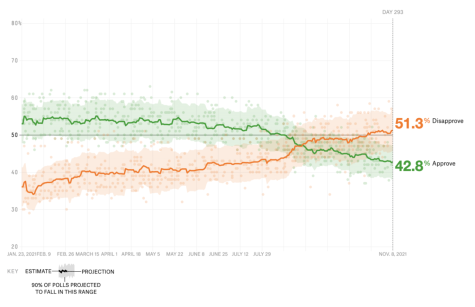
As Sinatra would have put it, Biden’s approval ratings were riding high in April, shot down in—well—August. FiveThirtyEight, a digital ABC subsidiary that conglomerates and synthesizes daily polling data on various political figures from a wide range of outlets, depicts the downward trend of the President’s popular support with striking, brutal clarity. Though some measure of fluctuation, typically in the range of a few percentage points, is an expected product of ever-unpredictable public sentiment, the rapid descent of mid-August is far from routine, but surely not inexplicable. Biden’s mishandling of the withdrawal from Afghanistan marked the first line of tire spikes on a lengthy slope, replete with party infighting and legislative stalemates—from a boisterous mandate to general discontent. Why Biden’s numbers continue to decline cannot solely be attributed to the end of his “honeymoon” period nor the Afghanistan debacle that followed.
Pro-gress v. Con-gress
Moving back to Biden’s herculean domestic agenda, the Administration’s difficulties only compound. His most aggressive and costly policy goals, initially served to Congress under the expansive “American Jobs Plan” in March, have proven a grueling exercise in legislative inaction. Upon its initial proposal, the nearly $2 trillion plan sought to fulfill some of candidate Biden’s most mammoth promises: fuel the nation’s push toward renewable energy, reinforce the social safety net for the elderly and disabled, invest $621 billion in repairing essential transit infrastructure, and create millions of new jobs in manufacturing and construction with a keen eye on environmentally conscious development.
With a Senate evenly split between Democrats and Republicans, a bill as audacious as the “American Jobs Plan” is far more easily devised than passed. Pared down, shuffled about, and redubbed the “Infrastructure Investment and Jobs Act” in the Senate, a version of the original plan engrossed by the House, passed on August 10th. Drastically altered from its initial state, the bill then had to undergo a process known as reconciliation, meaning that the House had to agree, once more, to the amended piece.
This is where the waters of Capitol Hill grew murky. Democrats in the House objected to passing the Senate’s bipartisan “Infrastructure Investment and Jobs Act” unless a companion bill, allocating $2 trillion for Biden’s social safety net and climate agenda, was passed alongside it. Thus, months of stalemate ensued, with rebellious Senate Democrats Joe Manchin (WV) and Kyrsten Sinema (AZ) denying their party the fifty votes (with Vice President Harris as the tie-breaker) needed to pass the bill.
Confidence in the party’s effectiveness continued to wane, many wondering: how could Democrats, with both chambers of Congress and the White House under their control, fail to follow through on Biden’s grandest promises?
Virginia
On November 3rd, that burning question was thrust into the spotlight, revealing widespread dissatisfaction with the Democratic Party’s performance of late. Last week, in Virginia, a state carried by Biden in 2020, Former Gov. Terry McAuliffe lost to Republican Glenn Youngkin—an electoral upset vindicating fears that legislative gridlock might pose long-term damage to Democrats’ performance. With the midterms just twelve months away, it became clear that something had to give.
Thus, the House voted to pass the $1.2 trillion infrastructure package on November fifth and has since sent it to the President for approval. The companion bill has yet to pass the Senate.
For now, we’ll have to settle for a bill without a few major pillars of Biden’s initial plan: provisions for caregivers, corporate taxes increases, and critical investments in modernizing and diversifying the country’s workforce.
Still, the damage has already been done. Biden’s grasp on the party appears weak, and lasting productivity remains a feat yet to be demonstrated by the present Administration and its Congress.
The Comeback Kid
In the midst of all this, it seems we’ve got a “Comeback Kid” on our hands. I’m not referencing Bill Clinton in the 1992 Democratic primaries, nor Joe Biden, and definitely not a Manitoban punk band. Rather, the term “Comeback Kid” is most appropriately ascribed to a mighty global force, which, in recent months, has once more been rearing its ugly head: COVID-19.
By June, seemingly placated and prepared to occupy a shunned shelf in the library of national consciousness, COVID lay incapacitated at the will of Biden’s swift vaccine rollout. Across the country, masks went out the window, large public gatherings resumed, and a summer of optimism shone from Maine to California.
To quote Ferris Bueller, “[l]ife moves pretty fast. If you don’t look around once in a while, you could miss it.” Move fast it did, and missed it we have.
Skyrocketing Delta Variant case numbers beginning in late July both set the stage for, and played a continued role in, the perceived success of the Biden Administration.
Since the start of July, approval of Biden’s pandemic response has fallen by 13.4%. While the majority of Americans still regard his response favorably, this decline—taken into account alongside Afghanistan and Congress’ leisurely approach to Biden’s economic plan—paints a dull picture of the course of popular support.
Is Joe the New Jimmy?
At last, we’re brought to the central question of today: is Joe Biden the new Jimmy Carter? It goes without saying that such a comparison, while loaded with historical baggage, remains relevant in the face of rising discontent and a political climate that teters between stability and all-out insurrection. Another four-year presidency, akin Carter, could spell the return of a Trumpian Republican to the Oval Office—a fate I hope to avoid.
The demise to which Carter fell victim was one precipitated by a nation-wide crisis of confidence.
A multi-year hostage calamity at the US Embassy in Tehran, an invasion of Afghanistan (by the USSR, not the Taliban), and soaring inflation—all of these brought Carter’s short stint at the top crumbling down. Visions for confident, modern, and progressive leadership were shrouded by blunder after blunder.
Save for the hostage crisis, it seems Biden’s challenges are coming to parallel those of his ill-fated, peanut-farming predecessor. A deadly plague, once thought slain, has reemerged with a vengeance; Afghanistan has fallen to our enemy; Biden’s policy agenda inches along at a snail’s pace, and inflation is rising at record rates. Indeed, both Jimmy Carter and Biden’s approval ratings mirror their embattled terms:
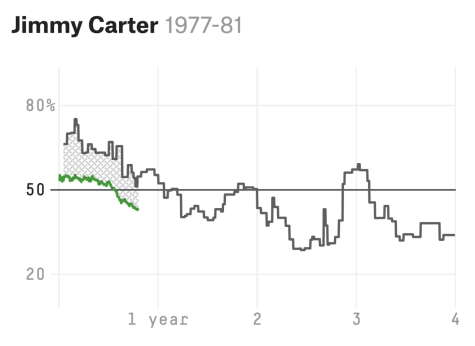
It’s tough to look past all these misadventures, some the direct fault of Biden’s Administration and some not, with enthusiasm, but we must. Like him or not, think highly of his accomplishments or not, feel optimistic about the Democratic Party’s promises or not—Biden’s the president we’ve got, and the stable figure to whom so many of us clung in the wake of Trump.
So even as his approval ratings continue to plummet, and once-plentiful comparisons to FDR dwindle, this writer would like to encourage some cautious optimism—as advised in my year-old comparison between Trump and Carter.
Malaise is a dangerous mold to feed. During the Carter administration, as under Trump, crises of confidence begot skepticism of our democratic process and the government built upon it. Once a notion as foundational to the persistence of our republic as “democracy” is shaken, all bets are off. What’s more, the spirit of a people, as intangible as it may be, is essential to the success of a President and a presidency.
In short, let’s call the glass “half-full,” at least for now. Should worse come to worst, I’d take Jimmy Carter or Biden over Trump any day.

Lorenzo Ruiz, a senior, is a Coeditor-in-Chief. An enthusiast of government and current events, his hobbies include debate, Academic WorldQuest, Model...

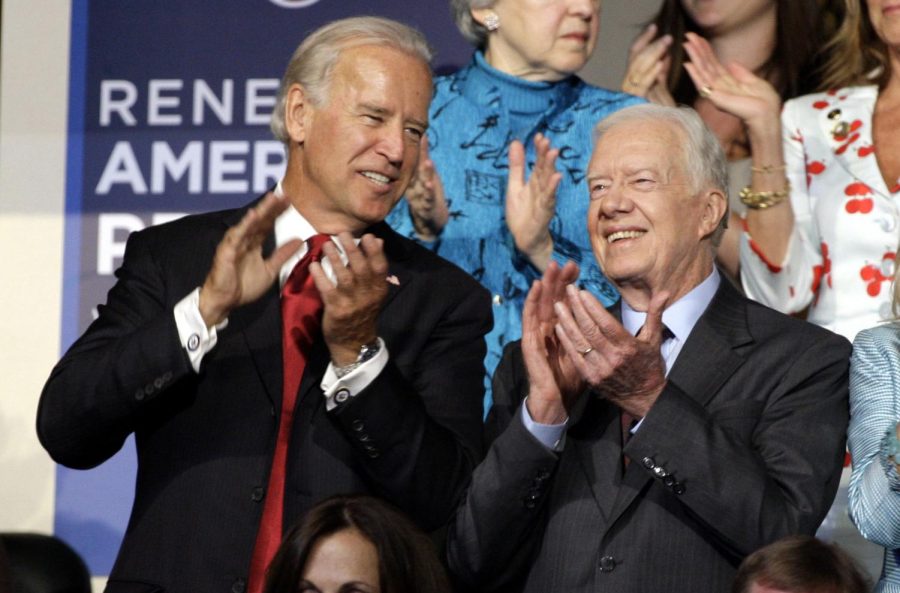
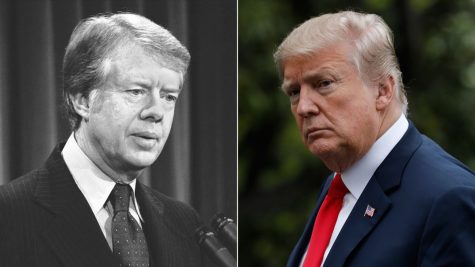
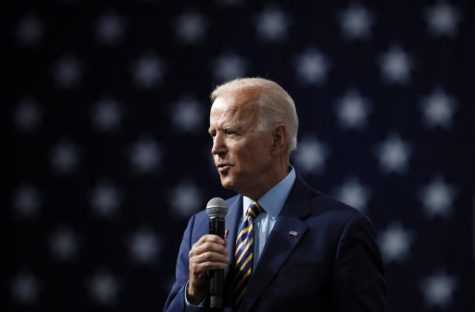

Robert • Nov 12, 2021 at 2:53 pm
Great article!